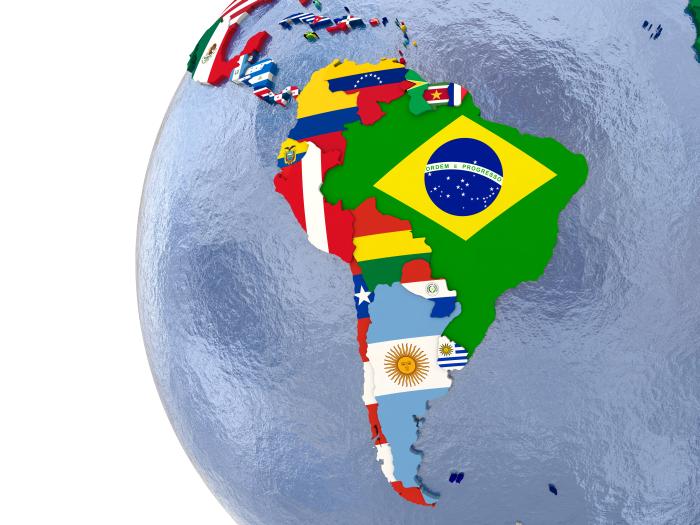This week, markets will look for key economic and political data releases in Latin America. The presidential elections in Brazil and the monetary policy meeting of the Central Bank of Peru will be in the spotlight.
The votes in Brazil were not enough to produce a winner and forced a run-off between incumbent President Jair Bolsonaro and former President Luis Inacio Lula da Silva.
Brazil’s economic agenda will also be busy. This week, industrial production and retail sales data for August are expected, as well as the trade balance for September.

Meanwhile, Peru’s monetary policy meeting is expected. The increase in inflation and the tightening of external financial conditions would be enough reasons for the central bank to raise its benchmark interest rate to 7%, according to forecasts by economists Adriana Dupita and Felipe Hernandez, from Bloomberg Economics.
On the other hand, in Argentina, the central bank’s survey will be published, and analysts’ opinions on the currency are expected after the government decides to offer soybean exporters a weaker differential exchange rate than the official peso.
Meanwhile, in Mexico, Colombia, Chile, and Peru, the inflation data for September is expected. In all four countries, consumer prices are expected to continue upward.
The following are the week’s economic events by country and day:
BRAZIL
On Sunday, October 2, the first round of elections occurred. Brazilians went to the polls to vote for the president, congress, governors, and legislators for the 27 states.
“A closer-than-expected race could weigh on markets if both candidates increase their aggressive or populist rhetoric,” economists Adriana Dupita and Felipe Hernandez mentioned.
August industrial production is due on Wednesday, October 5. Analysts expect it to have stagnated; if the figure is confirmed, the indicator’s three-month average would be down 0.4% from March-May and 0.2% from a year earlier.
August retail sales will be released on Friday, October 7. Dupita and Hernandez expect strong sales growth, although the three-month average would still be 2.7% below March-May and 4.1% below the year-earlier level.
The result would be explained by the cash delivery to low-income households, cab drivers, and truck drivers. In addition, lower prices in July and August probably also favored retail trade.
COLOMBIA
On Tuesday, October 4, the minutes of the Bank of the Republic of Colombia’s monetary policy meeting will be released, which should explain the bank’s decision to raise its benchmark rate to 10% in September from 9% previously and provide a better idea of the outlook for monetary policy.
On Wednesday, October 5, September inflation will be known, which, according to Dupita and Hernandez’s estimates, rose to 11.2% from 10.08% in August.
The decrease in government subsidies, and the accumulated depreciation of the peso, among other factors, would explain the result.
CHILE
The economic activity index for August is expected on Monday, October 3. Dupita and Hernandez forecast that the figure will probably fall by 0.9% year-on-year.
The year-on-year drop would be the first since February 2021, even though it should be noted that month-on-month activity has been falling since December amid tighter fiscal and monetary policies and waning stimulus from extraordinary pension savings withdrawals.
The September trade balance will be released on the same day, likely pointing to a substantial trade surplus leveraged by exports and imports that continue to rise at a double-digit pace.
The 12-month surplus should increase slightly, according to economists at Bloomberg Economics, to US$53.6 billion, up from US$53.2 billion in August.
September inflation will be released on Friday, October 7. Forecasts call for it to rise to 14.4% from 14.1% in August. Supply-side drawbacks, cumulative currency depreciation, and price indexation have prolonged inflationary pressures, according to Dupita and Hernandez.
The September trade balance will be published on the same day, which is expected to have registered a deficit of US$470 million compared to a US$990 million gap in August and a surplus of US$287 million a year earlier.
The increase in exports would explain most of the month-on-month variation, while the increase in imports would account for the year-on-year difference.
MEXICO
On Thursday, October 6, July gross fixed investment will be released, likely up 3.4% from a year earlier.
However, the data would imply that investment fell after a small month-on-month advance in June, with construction being the main drag due to tight fiscal and monetary policy.
September inflation will be released on Friday, October 7. According to Dupita and Hernandez’s forecasts, the figure rose to 8.81% in September from 8.70% in August.
Unprocessed food prices and services inflation are likely to rise, while regulated products and energy inflation are expected to fall.
PERU
September inflation will be released on Monday, October 3, and may have increased to 8.52% from 8.40% in August.
If the figure is verified, it would partially reverse the decline of the previous two months.
“Inflation may be near its peak, but it is likely to remain high for some time,” noted Dupita and Hernandez.
Thursday, October 6, will be the Central Bank’s monetary policy meeting. Dupita and Hernandez expect it to raise its benchmark interest rate by 25 basis points to 7.0%.
In previous meetings, policymakers have said the hikes are part of normalizing monetary conditions.
With information from Bloomberg

